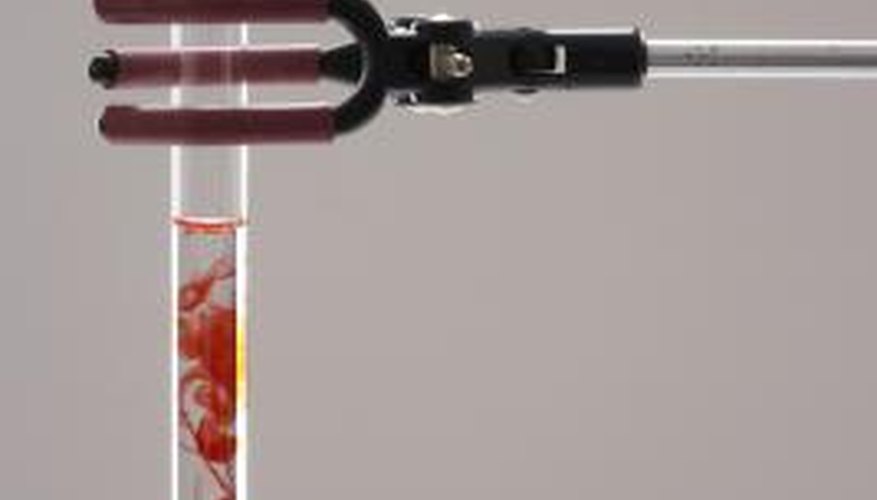Soda and lime, sometimes simply referred to as soda lime, is used in numerous scientific experiments in schools, colleges and in the field. Although soda and lime is used for various different experiments, the purpose of their use tends to remain the same for each of those experiments. Understanding the purpose of soda and lime in science experiments is an important foundation for future scientific endeavours.
Basic Purpose of Soda Lime
Soda lime is used for its unique chemical make-up which is a combination of soda ash (Na2CO3) and slaked lime (Ca(OH)2). Although soda lime can be used for various purposes within a given experiment, it is often used to remove carbon dioxide from a particular organism, and sometimes from the surrounding air. The process of removing carbon dioxide (CO2) is either conducted to produce a certain effect, or to remove CO2 so that the experiment can continue.
Softening Water with Soda Lime
Hard water (containing Ca2+ and Mg2+) can be found in many homes and businesses and is identifiable by mineral deposits it leaves behind. Examples of hard water can be soap scum or water residue left on previously washed dishes. In order to remove Ca2+ and Mg2+ from hard water, soda lime is used in the process. What happens when soda lime is added to hard water is that the magnesium (Mg2+) in the water turns into (Mg(OH)2) and the calcium (Ca2+) in the water turns into (CaCO3) after mixing with the soda lime. The Mg(OH)2 and CaCO3 are solids that can be removed from the water, changing it from hard to soft water.
- Hard water (containing Ca2+ and Mg2+) can be found in many homes and businesses and is identifiable by mineral deposits it leaves behind.
- The Mg(OH)2 and CaCO3 are solids that can be removed from the water, changing it from hard to soft water.
Soil Respiration
The forest floor is essentially the top layer, or surface, of soil in the forest. Decomposition, mostly carried out by bacteria and fungi, is necessary in order for plants and trees to receive the proper amount of nutrients. The bacteria and fungi convert carbon (C) into carbon dioxide (CO2) as part of the decomposition process, which is called respiration. To test the rate at which decomposition occurs in a given section of forest, the soda lime experiment is used. A dish of soda lime is placed on the forest floor and then covered by a chamber. The soda lime is pre-weighed as a control in the experiment. The soda lime then absorbs all of the carbon dioxide from the ground, as well as water vapour. Incubation times may vary, but eventually the soda lime is removed and left to dry at 40.6 degrees C. The weight of the dried soda lime is taken and scientists can determine the decomposition time from that.
- The forest floor is essentially the top layer, or surface, of soil in the forest.
- Incubation times may vary, but eventually the soda lime is removed and left to dry at 40.6 degrees C. The weight of the dried soda lime is taken and scientists can determine the decomposition time from that.
Oxygen and Carbon Dioxide of a Small Animal
Respiration in all animals is a combination of processes that include the intake/consumption of oxygen and release of carbon dioxide, among other factors. Soda lime is used in experiments in which the amount of oxygen a small animal consumes is to be recorded. In order to remove carbon dioxide from the equation and final analysis, soda lime is utilised for its ability to absorb all carbon dioxide in a given area. This makes it easier for scientists or researchers to determine only the amount oxygen consumed without the complication of carbon dioxide. At the same time, researchers can determine how much carbon dioxide is released by the animal.
- Respiration in all animals is a combination of processes that include the intake/consumption of oxygen and release of carbon dioxide, among other factors.
- In order to remove carbon dioxide from the equation and final analysis, soda lime is utilised for its ability to absorb all carbon dioxide in a given area.
